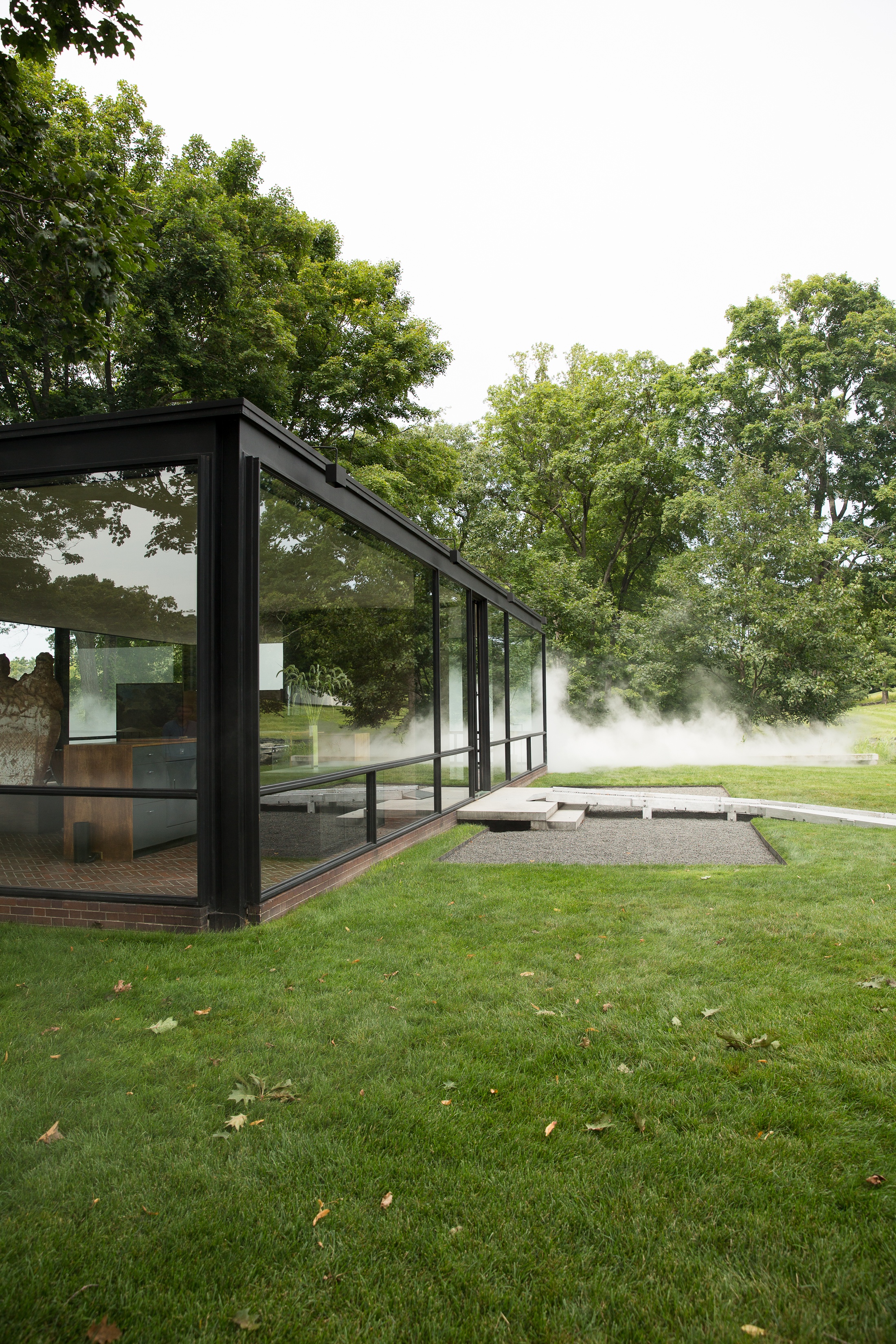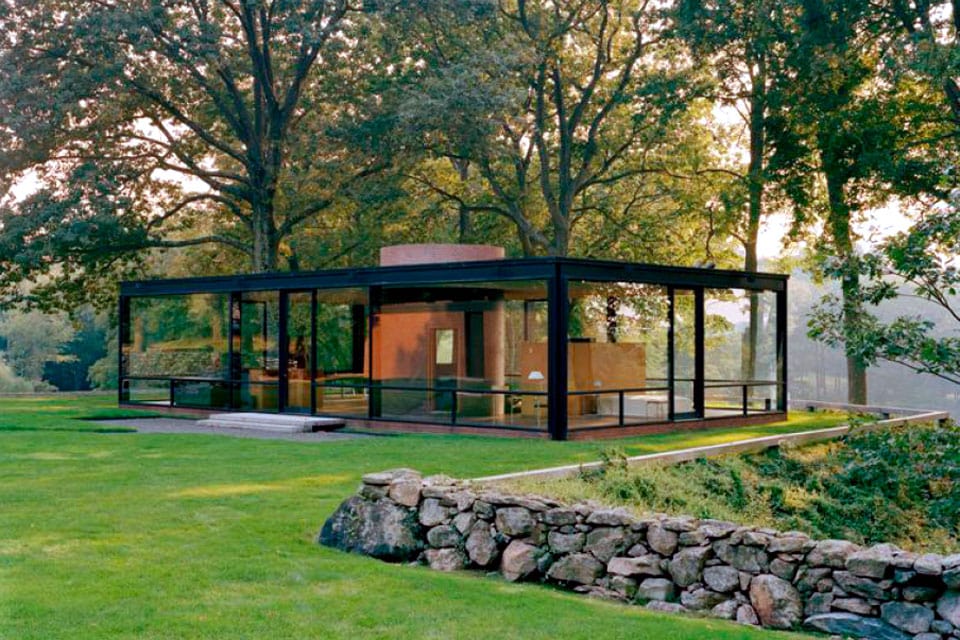Table Of Content

Anthony Vidler is professor at and former dean of the Irwin S. Chanin School of Architecture, Cooper Union, and a historian and critic of modern and contemporary architecture. Also down there, and definitely not undersized, is Johnson's monument to his friend Lincoln Kirstein, who, among many other things, was a co-founder of the New York City Ballet. The 30-foot tower is designed to be climbed (guests are not allowed to do this), which looks way too harrowing but Johnson did it often, and well into his 80s. Johnson's Pavilion in the Pond is visible from the Glass House, but if you're on the self-guided tour you can hike down there and check it out up close. The Glass House itself is the focal point of any tour, whether self-guided or not.
Philip Johnson’s Glass House: An Icon of International Style Architecture
Since his early days visiting the Bauhaus, Johnson had been an admirer of Breuer’s with whom Johnson also studied while at Harvard. Breuer had joined a number of his former Bauhaus colleagues under Walter Gropius’s leadership at Harvard following their departures from Germany in the late 1930s. Johnson was born in 1906 to a wealthy and highly educated family in Cleveland, Ohio. He would go on to Harvard for an undergraduate degree in philosophy and classics ( ) and then graduate studies in architecture ( ). In 1942 he built a house for himself in Cambridge, Massachusetts based on the ideas of Walter Gropius and Ludwig Mies van der Rohe and upon graduation in 1943 served in the US Army during WWII ( ). In his Social Justice report on his trip to Poland, Johnson declared that the German victory amounted to an unmitigated triumph for the Polish people and that nothing in the war's outcome need concern Americans.
Atomic Habits for Architectural Professionals
According to Shigeru Ban, “If a building is loved, it becomes permanent.” Ultimately, the work aims to challenge conventional notions of permanence and material strength. It’s a small house, to be sure — just one room — and it’s made mostly of paper, but it’s more resilient than it looks. At the architect Philip Johnson’s former estate in New Canaan, Conn., there has long been a Glass House and a Brick House. Philip Johnson's Glass House, along with Mies van der Rohe's Farnsworth House, was the subject of Sarah Morris's 2010 film Points on a Line. Morris filmed at both sites over the course of several months, among other locations including The Four Seasons Restaurant, the Seagram Building, Mies van der Roheʼs controversial 860–880 Lake Shore Drive Apartments, and Chicagoʼs Newberry Library.
Other structures on estate
According to William Earls, author of The Harvard Five in New Canaan, Johnson received the commission for the house after introducing himself to a couple who was looking at the site across the street from his Glass House. The Hodgson House won the first prize in residential design at the 1954 International Exhibition of Architecture in Brazil and the 1956 First Honor Award from the American Institute of Architects. The house is currently listed on the National Register of Historic Places and is protected by easements administered by the National Trust for Historic Preservation. Modern architectural trends of the 20th century often began with residences for wealthy patrons. The Modern and Postmodern architecture of these historic houses describes the innovative approaches by a handful of architects, including Philip Johnson and Mies van der Rohe.
Early life and career
And you can revisit it as many times as you want during your adventure – walking the perimeter, gazing out at the incredible views, you’ll learn new things from the on-site educator each time. Donald Judd's site-specific circular concrete sculpture, Untitled, 1971, which Johnson acquired by trading one of his Frank Stella pieces with Judd, is on the way to the Glass House, so you'll see that on the one-hour tour, too. – All children must be at least ten years old to participate in tours and must be accompanied by an adult.
Philip Johnson Architect: Buildings, Designs - e-architect
Philip Johnson Architect: Buildings, Designs.
Posted: Wed, 11 Oct 2023 07:00:00 GMT [source]
This was a new entry pavilion in a sculptural form, which he called the "Monsta", or "Monster". Johnson was born in Cleveland, Ohio, on July 8, 1906, the son of a lawyer, Homer Hosea Johnson (1862–1960), and the former Louisa Osborn Pope (1869–1957), a niece of Alfred Atmore Pope and a first cousin of Theodate Pope Riddle. His ancestors include the Huguenot Jacques Cortelyou, who laid out the first town plan of New Amsterdam for Peter Stuyvesant. Grainger, purchased in 1990 by Johnson’s partner, David Whitney, was often used as a hot weather retreat.
Can You Build a House Out of Paper? Shigeru Ban Says Yes.
It is separated from the living room by a series of built-in storage cabinets with walnut veneer. Although today open space floor-plans are common, it was highly unusual in 1949. Europeans were impressed by the innovative structure of the Lovell House. The balconies were suspended by slender steel cables from the roof frame, and the pool hung in a U-shaped concrete cradle. It was necessary to fabricate the skeleton of the Lovell House in sections and transport it by truck up the steep hill. Pritzker Prize winning architect Thom Mayne wanted to transcend the concept of a traditional suburban home when he designed the Blades Residence in Santa Barbara, California.
Post a comment to this article
Philip Johnson’s Glass House is an estate of 16 buildings, structures, and objects situated on 40 acres of land. Understood to encompass the original buildings of 1949 and everything Johnson added afterward, the Glass House can be described as “the diary of an eccentric architect,” in the words of Johnson himself. Like a diary, the Glass House reflects Johnson’s stylistic changes over nearly five decades of practice, from modernism to formalism to postmodernism and beyond. Philip Cortelyou Johnson (July 8, 1906 – January 25, 2005) was a prominent American architect known for his modernist Glass House in Connecticut and postmodern 550 Madison Ave in New York for AT&T. He also designed 190 South La Salle St in Chicago, the Sculpture Garden at MoMA, and the Pre-Columbian Pavilion at Dumbarton Oaks. Johnson was the first director of MoMA’s architecture department, where he showcased works by Gropius, Le Corbusier, and Mies van der Rohe.
Popular Articles
Ritchie had been a partner for many years in the Johnson-Burgee office and was the partner-in-charge of the AT&T building and the 190 South LaSalle office building, a skyscraper designed as an homage to the demolished Masonic Temple of Chicago. In 1994, they formed the new practice of Philip Johnson-Alan Ritchie Architects. During the next ten years, they worked closely together and explored new directions in architecture, designing buildings as sculptural objects. In 1977, Johnson completed a much quieter garden in Dallas, Thanks-Giving Square It features a non-denominational chapel in a spiral form, a meditation garden and cascading fountains, tucked between buildings in the center of the city. In 1939, Johnson returned to Harvard’s School of Design to pursue a degree in architecture. Some of the buildings he designed include an annex for the Museum of Modern Art, the Seagram Building in New York, and the Epidemiology and Public Health Building at Yale.
Within this field, her main focuses have been the Art Nouveau and Vienna Secession, the decorative arts, as well as the reception of marginalized artists. Currently, she finds herself very interested in art from the early and mid-twentieth century. When Isabel is not busy writing, she loves traveling, photography, web design, and being in nature. For example, wood is used for the kitchen cabinets, the bathroom door, and the closet behind the bed. Steel was used to make the chairs and the daybed, which were designed by Mies van der Rohe, as well as the coffee table.
Our most concise tour, focusing on The Glass House and its promontory, with a minimum of walking. Declared a National Historic Landmark in 1997, the Glass House is still considered a modern marvel. The guest house, connected to the Glass House with a stone path that lays over the expansive lawn immediately surrounding it, is a heavy brick structure, contrasting the extreme lightness and transparency expressed in the Glass House. Nonetheless there are still many features that contribute to the beauty of the house. The clear glass panels create a series of lively reflections, including those of the surrounding trees, and people walking inside or outside of the house, layering them on top of one another creating everchanging images with each step taken around it. The “room” with the greatest privacy is the bedroom, which also contains a small desk.
Wolfhouse in Newburgh, New York - Travel + Leisure
Wolfhouse in Newburgh, New York.
Posted: Thu, 14 Sep 2023 07:00:00 GMT [source]
I found a great oak tree and I hung a whole design on the oak tree and the knoll because this place. Don’t forget, it is more of a landscape park than it is a work of architecture, anyhow. It’s more a memory of the English parks of the 18th century, which are called English gardens, for some reason. There’s no garden anywhere, I mean, there are no flowers, as Americans think of gardens. It’s just a sort of a landscape in which I focused it on this knoll and this oak tree. And the view from that knoll and the view back was how I figured the whole thing.
The garden is an elliptical outdoor room that dominates the 4,800 square foot home. It is often asked why the Glass House is in New Canaan, Connecticut, a suburb in Fairfield County, located only about one hour from New York. The town became a magnet in the 1940s for several figures in architecture at Harvard. Marcel Breuer, Eliot Noyes, John Johansen and Landis Gores all came to New Canaan to build homes for their own use as well as for clients.
The campus serves as a catalyst for the preservation and interpretation of modern architecture, landscape, and art; and a canvas for inspiration and experimentation. Johnson’s style took a final turn with the New York City AT&T Building (1984; it was later sold and renamed). Designed with a top resembling a Chippendale cabinet, the building was considered by critics to be a landmark in the history of postmodern architecture. Johnson turned explicitly to the 18th century for his design of the Gerald D. Hines College of Architecture at the University of Houston (1983–85); it was based on unexecuted plans published by the French architect Claude-Nicolas Ledoux. Johnson’s partner in these endeavours (1967–91) was the architect John Henry Burgee.

After returning from the war in 1946, Philip Johnson bought a five-acre plot in New Canaan, close to New York City. Soon after purchasing the land, Johnson started designing a residence for himself called The Glass House. Eventually, the Glass House was designed between 1946 and 1948, after which it was built and finally completed in 1949. There has always been a suspicion that so complex a figure as Johnson demands yet a different kind of analytical approach to this work. She admits the risk of seating the architecture on the couch as a substitute for its author, but for her, the house is a repository packed with architectural signs of envy, a sense of inadequacy, deferral, and the burial of memory.

No comments:
Post a Comment